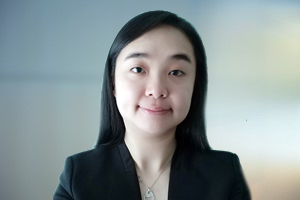The global population is aging, with Asia expected to see the most rapid increase in elderly citizens in the coming decades. Countries in the region need to prepare now to address the needs of older citizens to ensure they age with dignity.
This includes proactive actions by governments and regulators, as well as insurers. The life and health insurance industry is tasked with designing simple, inclusive, and affordable products that cater to the needs of this growing segment of the population. Insurers must now ask: What challenges and opportunities do the aging population phenomenon, also described as the “silver tsunami,” present?
Consider this: The move from an aging population (7-14% aged 65 and above) to an aged population (14-21% aged 65 and above) has taken 73 years in Australia, while it is forecast to take only 22 years in Singapore and Thailand. Causes include decreased fertility rates, longer life expectancies, and rapid growth of the middle class. This accelerated shift will present wide-ranging implications for the way cities and communities are built and organized, as well as the need to provide health, social services, work, and economic policies.
To help ensure all older people can live long and healthy lives, the United Nations (UN) declared 2021-2030 the “UN Decade of Healthy Aging” and will direct worldwide initiatives promoting the following:
- Age-Friendly Environments – removing physical and social barriers, providing products and technology, and implementing policies, systems, and services to enable people to continue to do things they value even as they lose capacity
- Combating Ageism – removing stereotypes and negative attitudes toward older people
- Integrated Care – ensuring good-quality essential health services are available for older persons, and that those services are within their financial capacity
- Long-Term Care – providing access to good-quality long-term care to allow people to maintain their functional ability, enjoy basic human rights, and live with dignity
Governments around the world have already begun implementing some of the above initiatives to change society’s perspective on the elderly, including extending the retirement age and encouraging healthy older people to re-enter the workforce in a contractor or part-time capacity.
While some markets charge a flat price irrespective of age, healthcare products in most markets are priced according to age, and the cost of care increases exponentially as one gets older and sicker, with 25% of all healthcare costs incurred during the final three years of life. This may create an increased market opportunity to provide health protection products to the “well off” but not necessarily mega rich, who understand the need for protections as they age. The biggest challenge will be providing coverage and care to the less affluent.
Challenges of Supporting the Aging Population
Many current insurance product offerings do not reflect the needs of the elderly, mainly due to underwriting and profitability challenges. Insurers must endeavor to close this gap with an eye toward larger healthcare trends and challenges for the elderly, which include:
- Shifting burdens of care from acute care toward more rehabilitative benefit requires careful consideration and management.
- Expanding hospital capacity and finding alternative healthcare facilities to help manage the expected volume requires extra funding and innovative approaches.
- Health policies must focus more on preventive care to help mitigate the demand expected from the aged population.
- Affordability of healthcare may decrease due to fewer healthy people and lower subsidy levels.
Affordability remains the key challenge. Longevity expectations for the older population coupled with regulatory requirements around sustainable funding make it difficult for insurers to design affordable long-term products with any sort of guarantee. Offering preventive, rehabilitative, and alternative healthcare services also requires insurers to utilize significant resources to manage their network and negotiate better prices with service providers.
Despite these obstacles, the business opportunity – not to mention the social good – presented by serving an increasingly aging population has become significant enough for insurers to explore new solutions. Challenges will become opportunities for first movers among industry players.
Opportunities for Insurers
The life and health insurance industry already offers an array of products designed with the aging and aged population in mind:
- Long-term care insurance helps cover costs associated with nursing homes, assisted living facilities, or other services to assist with daily activities. Some products even incorporate Activities of Daily Living (ADL) benefits into traditional insurance products, such as critical illness and hospital cash plans, to provide some level of long-term care cover for the elderly.
- Retirement and pension products, while generally designed to target the younger population, are essential to protecting the financial wellbeing of older adults.
Insurance products designed for the elderly typically have the following characteristics:
- Simple - feature simple underwriting and straightforward benefits
- Inclusive - cover higher entry ages and mild impairments common among the elderly
- Affordable - often cover only select illnesses or conditions, with varying levels of co-payment, to keep costs low
In some markets private insurers are partnering with government entities or riding on public social welfare benefits to reach more elderly people. The goal is to provide more holistic care services while keeping the additional cost of private cover affordable.
For example, many insurers in China, are either investing directly in eldercare communities or partnering with established eldercare providers to build eldercare ecosystems. One leading insurer took it a step further by introducing its own home-based eldercare brand and bundling eldercare services with insurance cover.
Worldwide initiatives to navigate the many repercussions of an aging population are currently in motion under guidance from the UN and other entities. Insurance is only part of the solution. In Asia in particular, insurers are challenged to swiftly redesign protection products that are accessible and cater for the needs of people at every stage of life. Action is needed now, and the right steps can provide security and greater peace of mind for elderly consumers as well as sustainable business growth for insurer




